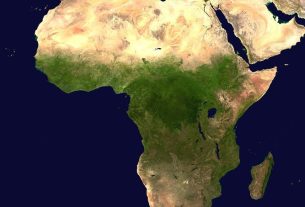According to the Ukrainian authorities, the attack lasted around 12 hours and involved nearly 600 drones, 46 cruise missiles and five rockets.
“More lives have been lost…homes have been impacted [and] children are among the casualties,” said the UN aid coordination office, OCHA. Densely populated Kyiv and Zaporizhzhia were among the regions that came under attack that destroyed or damaged home and other public services.
The UN World Health Organization (WHO) reported on Sunday that a cardiology facility had also been hit in Kyiv, killing two.
Nuclear plant risks
In a related development, the Russia-occupied Zaporizhzhia nuclear power station continued to use emergency generators to power its six shutdown reactors and other essential nuclear safety and security functions, after suffering its tenth complete loss of offsite power supply last week.
In warning at the weekend, the UN International Atomic Energy Agency (IAEA) said that the plant had enough spare fuel to last at least 10 days and that it was in contact with both sides to restore outside power as soon as possible.
The nuclear watchdog also underlined the “constant dangers” to nuclear safety last week after a drone was downed and detonated approximately 800 metres from the perimeter of Ukraine’s South Ukraine Nuclear Power Plant.
An IAEA team on site reported that 22 unmanned aerial vehicles had been observed late Wednesday and early Thursday, some coming as close as half a kilometre from the site.
The team said that a crater measuring four metres square at the surface and one metre deep had been left by one downed drone. There were no reported casualties.
“Once again drones are flying far too close to nuclear power plants, putting nuclear safety at risk,” said Director General Grossi. “Fortunately, last night’s incident did not result in any damage to the South Ukraine Nuclear Power Plant itself. Next time we may not be so lucky. I continue to urge both sides to show maximum military restraint around all important nuclear facilities,”
Winter threat grows
As winter comes, attacks on Ukraine by Russia have continued to impact energy infrastructure, cutting power to thousands of people.
In the first half of 2025, the UN and partners provided some form of assistance to 2.4 million people throughout the country, with a focus on helping front-line communities. Total needs are more than twice that number.
In addition to significant access challenges in Russian-occupied territories, the humanitarian response remains stretched by the sharp increase in attacks in recent months which has caused new displacement and created additional needs.
The 2025-2026 Winter Response Plan which launched in July seeks $280 million and is about 40 per cent funded.
In line with the reprioritized relief plan for Ukraine – the result of reduced funding for humanitarian work globally – aid workers are focusing on four deliverables:
- assist vulnerable front-line residents,
- support evacuations,
- deliver emergency post-strike assistance and
- help internally displaced people.
OCHA stressed that relief assistance continues to be provided in areas outside the priority focus, particularly in western and central Ukraine.


